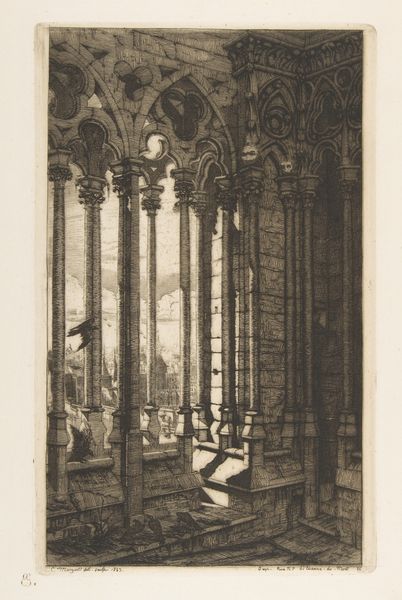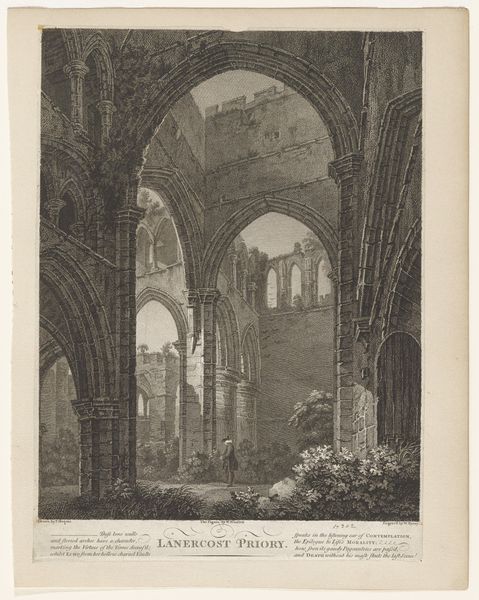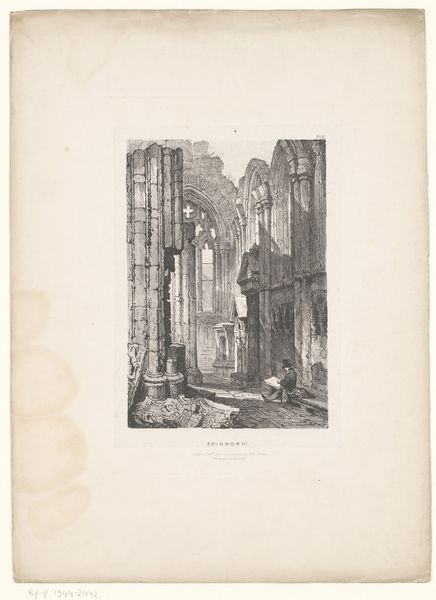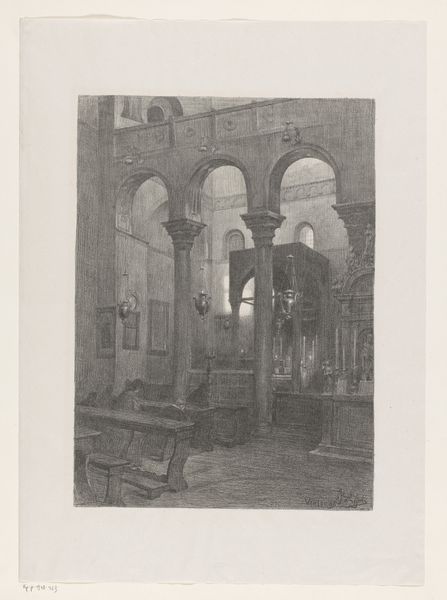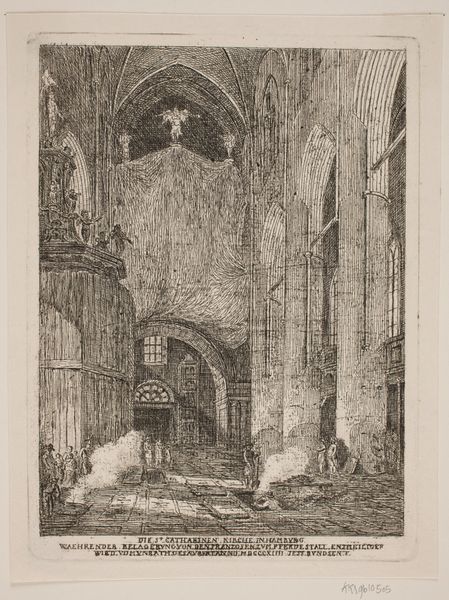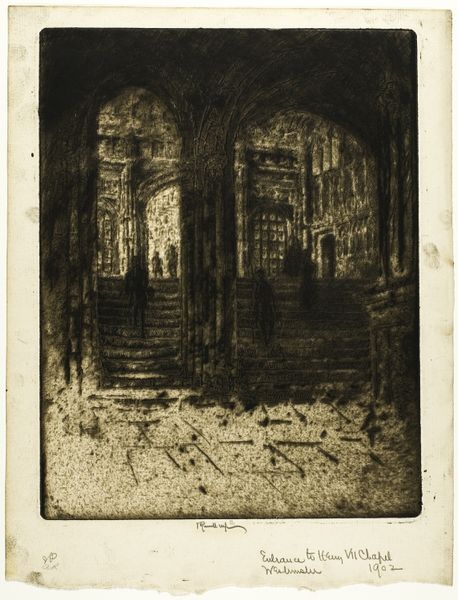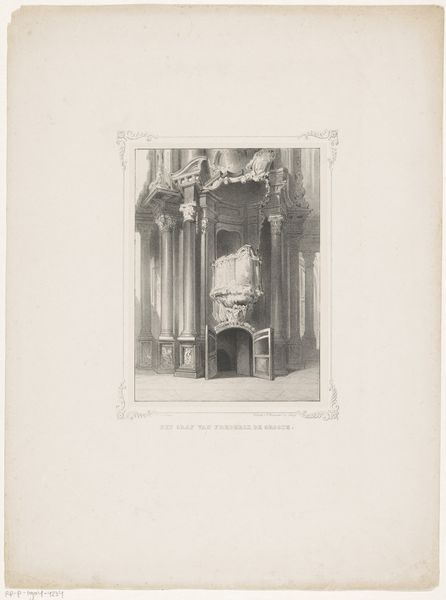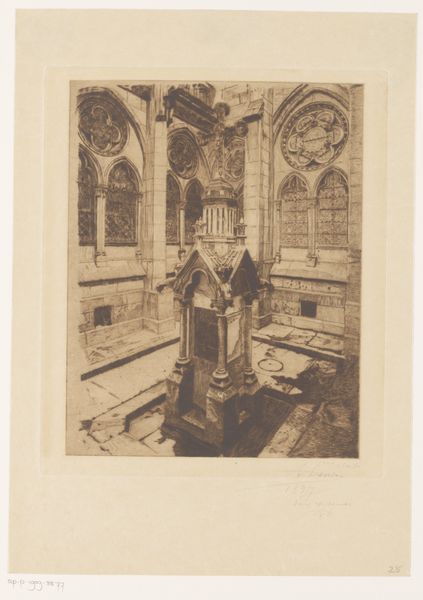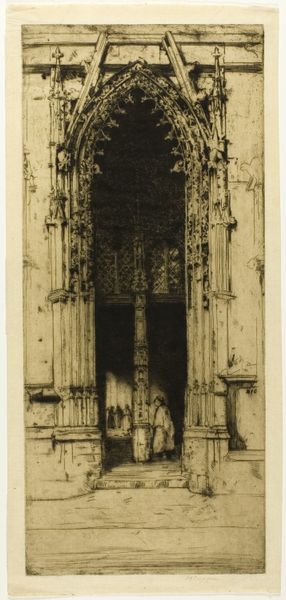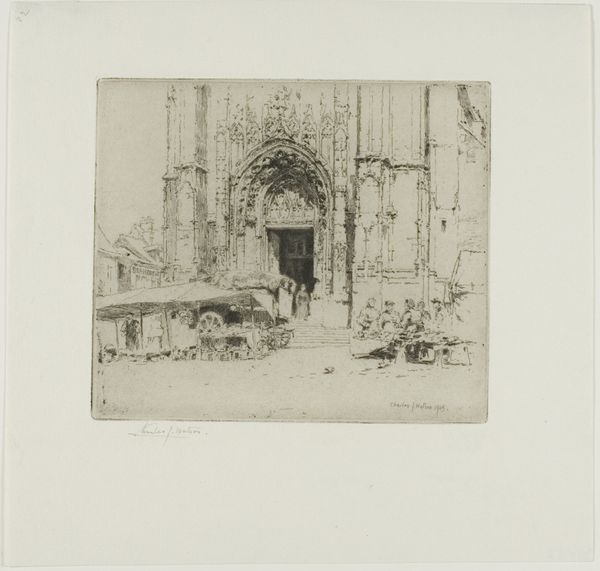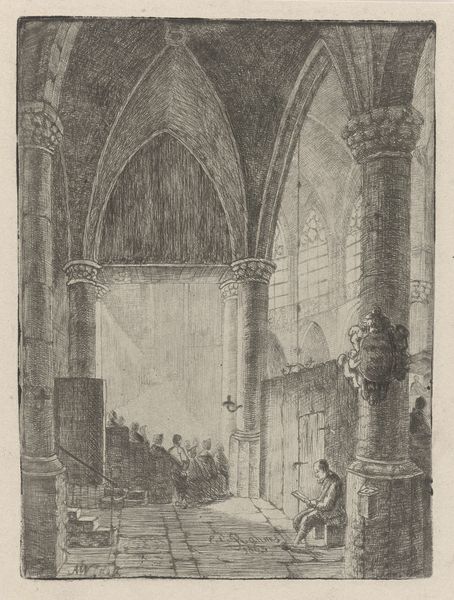
Dimensions: 273 × 162 mm (image); 282 × 176 mm (plate); 430 × 275 mm (sheet)
Copyright: Public Domain
Editor: This is "The Gallery of Notre-Dame, Paris," an etching by Edmond Gosselin, created in 1853. The architectural detail is stunning, almost overwhelming. The arches and columns create a strong sense of depth. What stands out to you the most when you look at it? Curator: The etching's success lies precisely in that articulation of depth you mention. Notice how Gosselin masterfully employs hatching and cross-hatching to delineate the gradations of light and shadow across the stone. It’s not merely representational; it’s about using light to create spatial volume, don't you think? Editor: Yes, absolutely! The light and shadow really define the forms. How would you describe the role of the line itself in this piece? Curator: The line here performs several crucial functions. Primarily, it constructs the intricate architectural framework, those complex gothic arches, the rows of engaged columns, even the suggestion of the city beyond. Further, look how line suggests texture; notice how variations in density of line translate into shifts in tone and the perception of varied material qualities. The stone, for instance, is subtly distinguished from the distant cityscape through strategic linear deployments. Editor: So it’s about more than just outlining shapes? Curator: Precisely. It transcends simple description, operating instead as a powerful means to create space and manipulate visual experience. Editor: That makes me see the work in a completely new light – the technique as its message. Thank you! Curator: My pleasure. I am equally grateful for the exchange. It serves as a healthy reminder of the power of close formal reading.
Comments
No comments
Be the first to comment and join the conversation on the ultimate creative platform.
